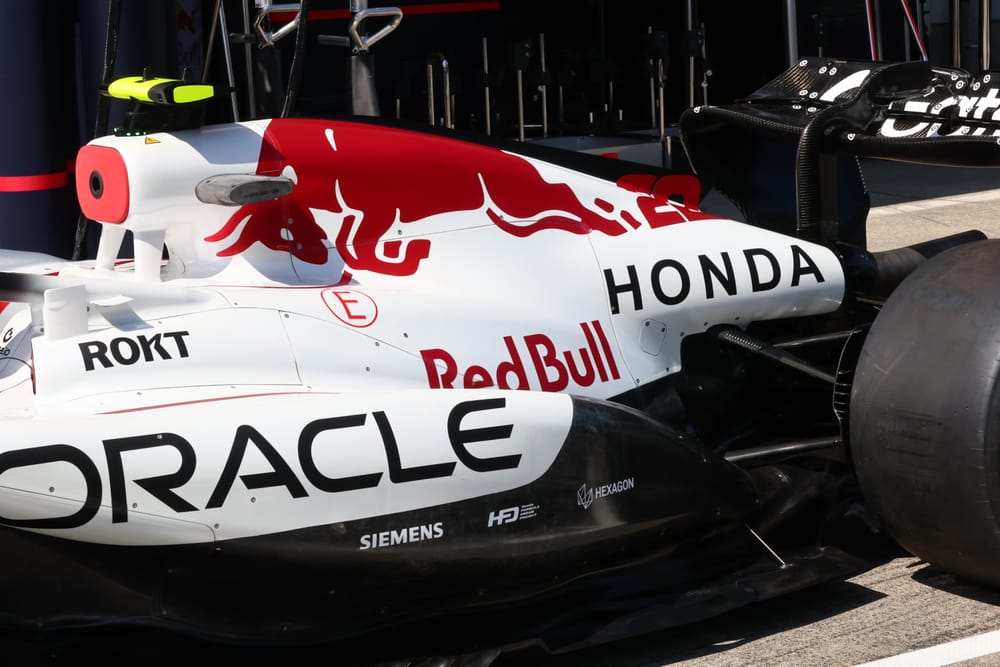Red Bull says revisions made to the cooling exit of its engine cover for Formula 1's Japanese Grand Prix have delivered an added benefit in boosting the performance of its rear wing.
The team is one of a small number to have brought upgrades to Japan for the start of the triple-header that also incorporates the Bahrain and Saudi Arabian Grands Prix.

As it chases gains on the RB21 that it hopes can help it close the gap to pacesetter McLaren, its developments for Japan included improvements to its engine cover and cooling exit (above), an enlarged rear exit duct on its brakes plus a revised rear wishbone shroud.
While Red Bull has labelled the first two changes as being for "reliability" reasons, its chief engineer Paul Monaghan has offered some insight into how improvements here have also cleaned up airflow for the rear wing too.
"Everybody has got a central exit, and they are supplemented with louvres at the sides if we want," he explained.
"The flow that comes off the top body mixes with the flow coming through the top body [out of this exit], and it tumbles and merges a bit.
"Obviously it's not as clean as you might want it to be, and just downstream of that is the rear wing.
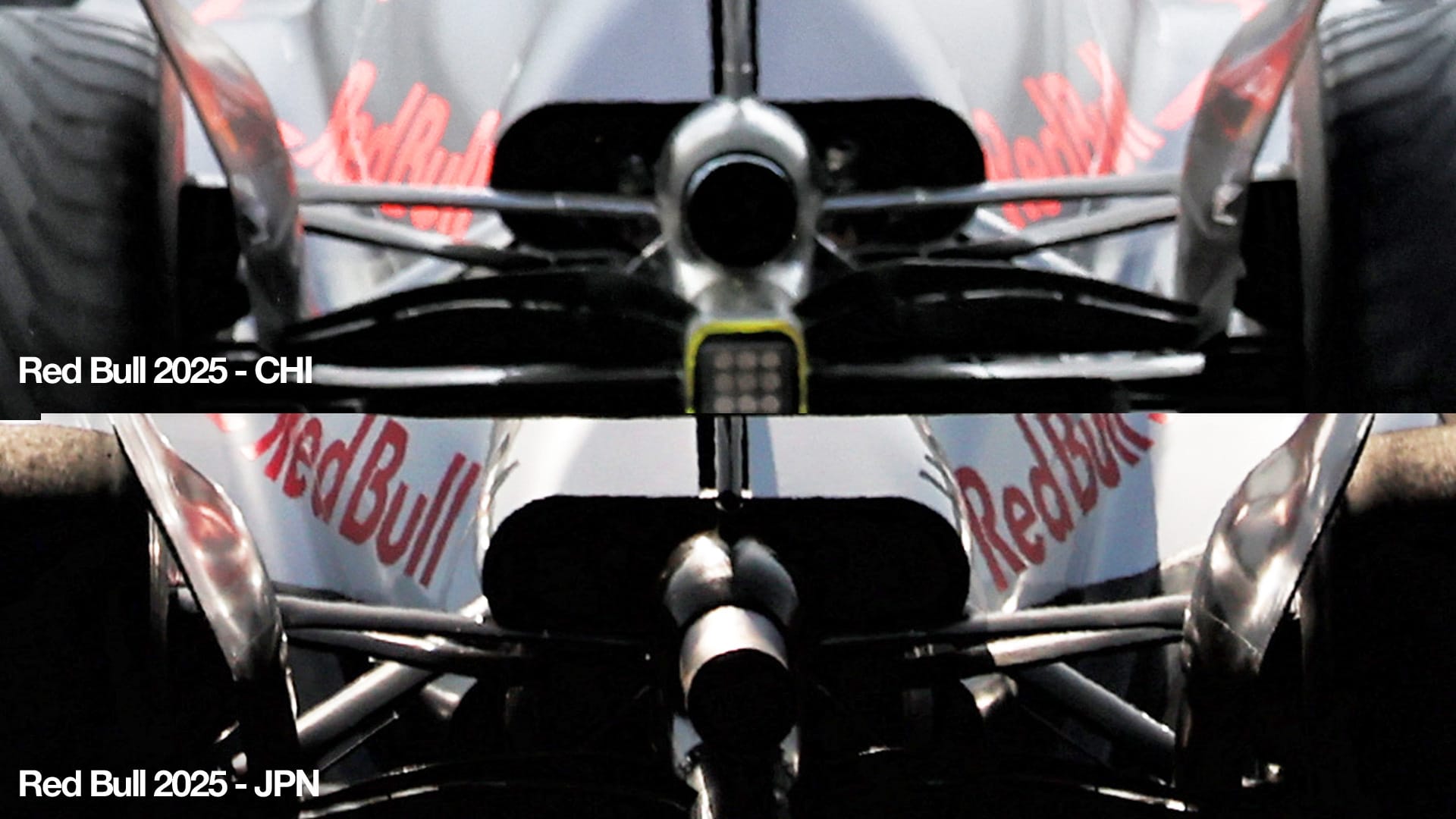
"If we get it right, then the cooling exit that is of least impact to the rear wing performance, be that upper or lower, comes out under the main wing and on top of the beam wing. It goes through the gap and there's no bother to it.
"So we're just trying to make a small refinement to enhance that a little bit. That's all. We've been able to do it with little expense, and we've had the time to bring it here."
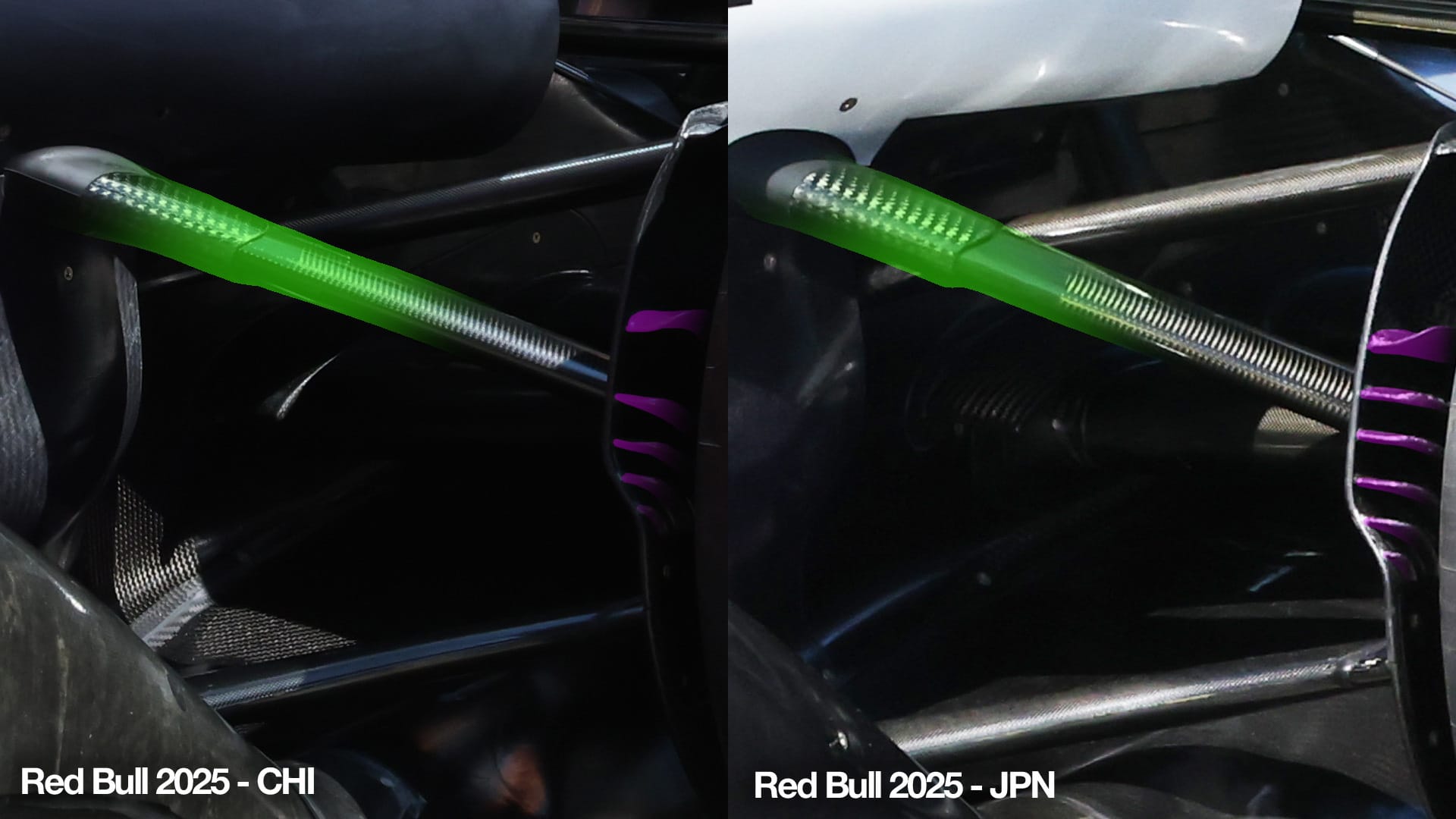
In terms of the rear suspension changes Red Bull has made, as can be seen above, the shrouding around the rear lower wishbone has been tweaked to give a better airflow to the brake duct assembly.
All the other Suzuka upgrades
Sauber
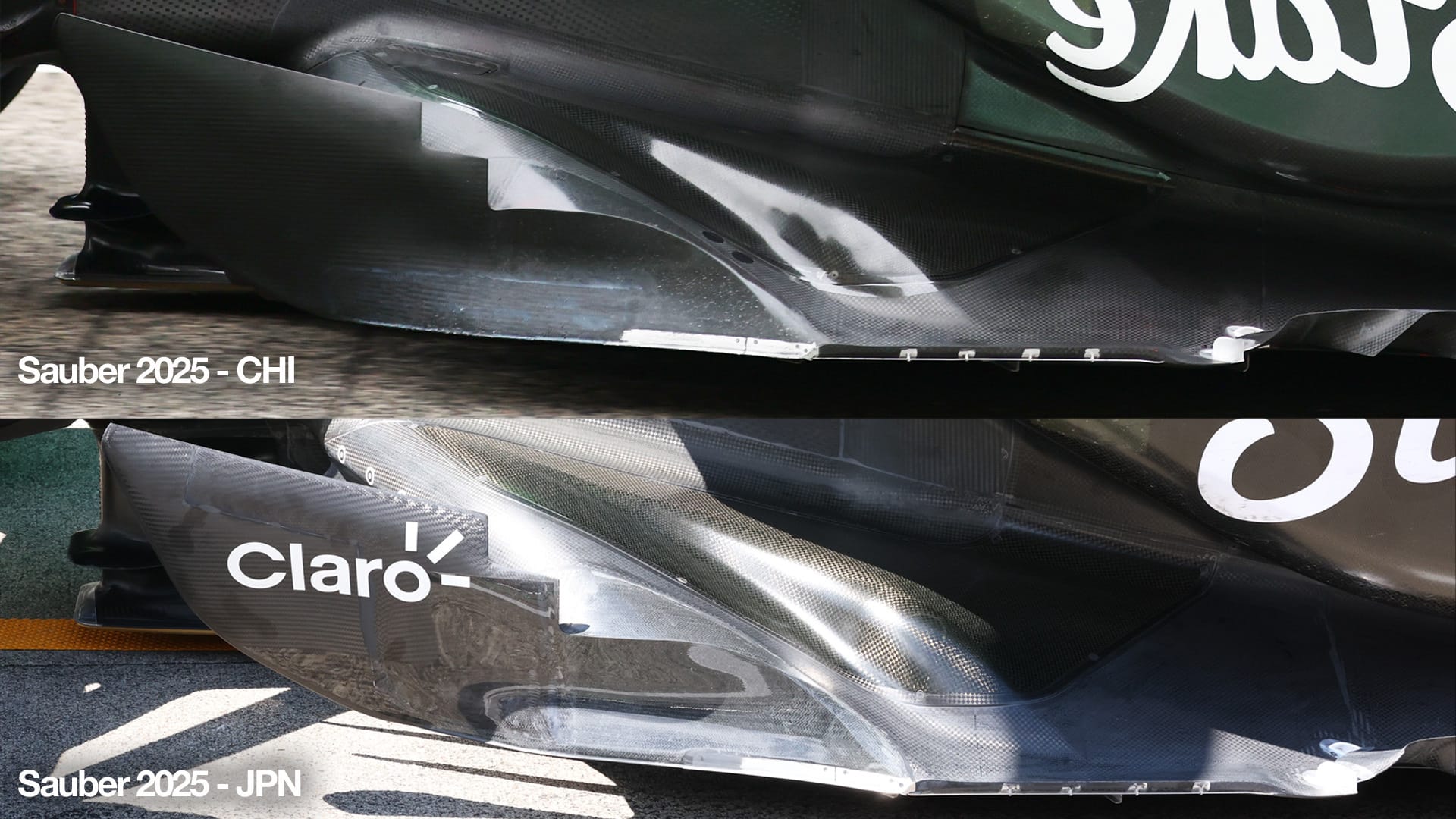
Sauber continued to roll out the latest step in its early season development plan.
An all-new floor was initially run by Nico Hulkenberg in first practice. This design features new fences, a revised floor edge and diffuser.
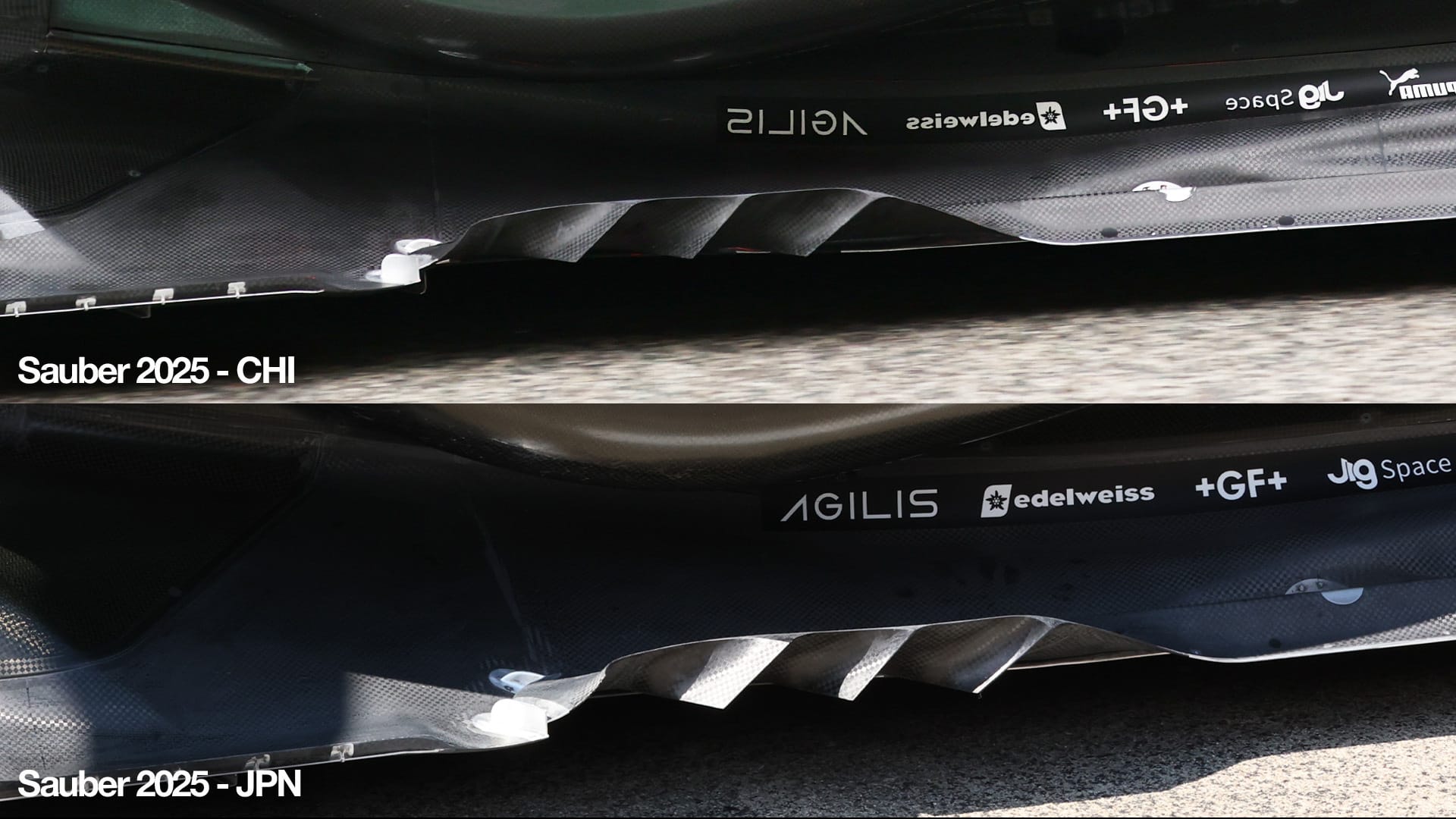
Beyond the floor, the rear wing and rear beam wing have also been developed in pursuit of greater combined aero efficiency, with the beam wing now featuring a second element, forward of and above the original.
Haas
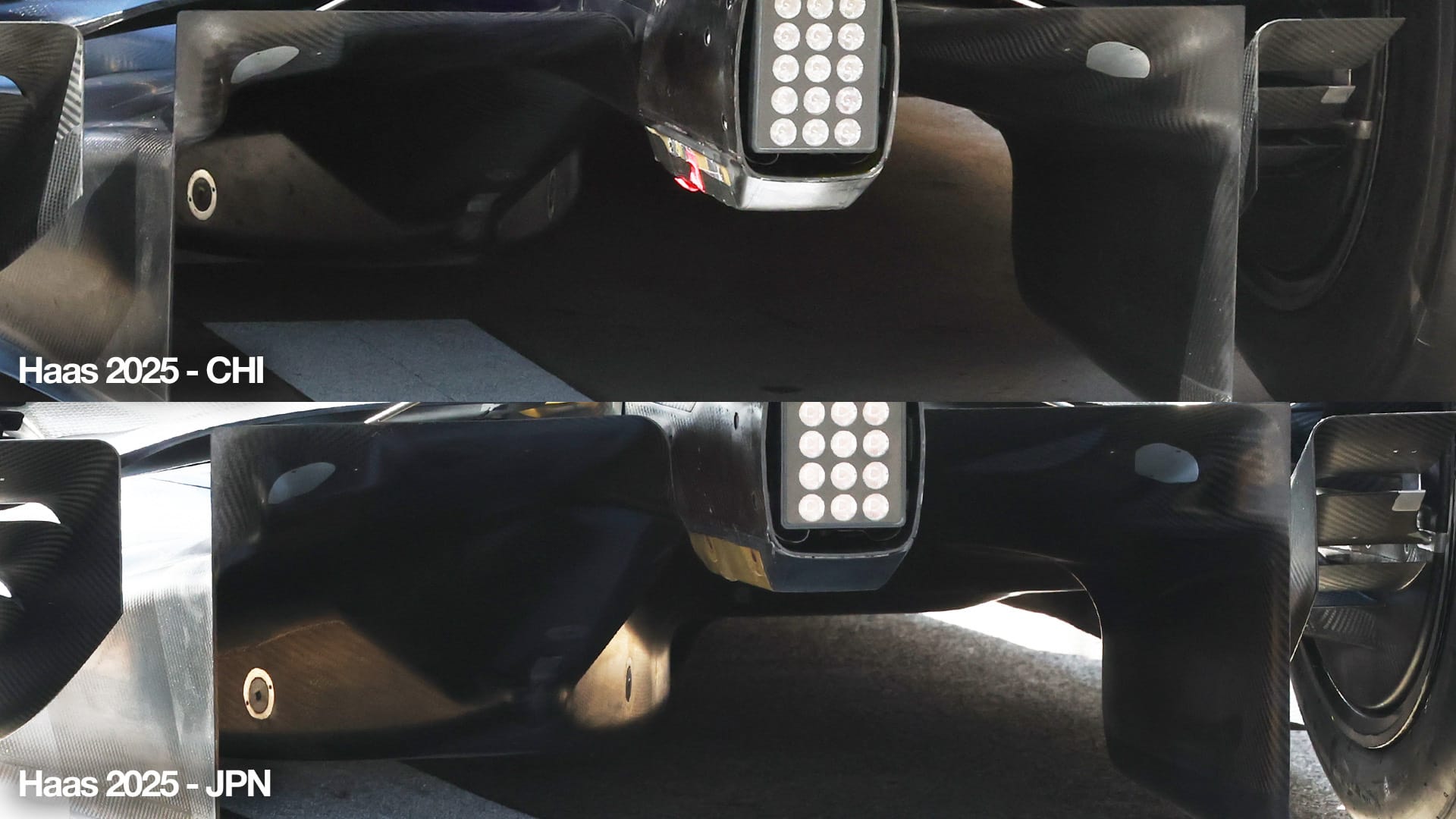
The ‘canoe’ central section of the floor has been reshaped as Haas tries to endow its car with better high-speed corner stability.
It's tested two floor specifications in FP1 with no clear winner, so work will continue in FP2 between Esteban Ocon and Ollie Bearman.
Racing Bulls
The halo shroud has been reshaped to give better airflow to the rear wing.
Williams
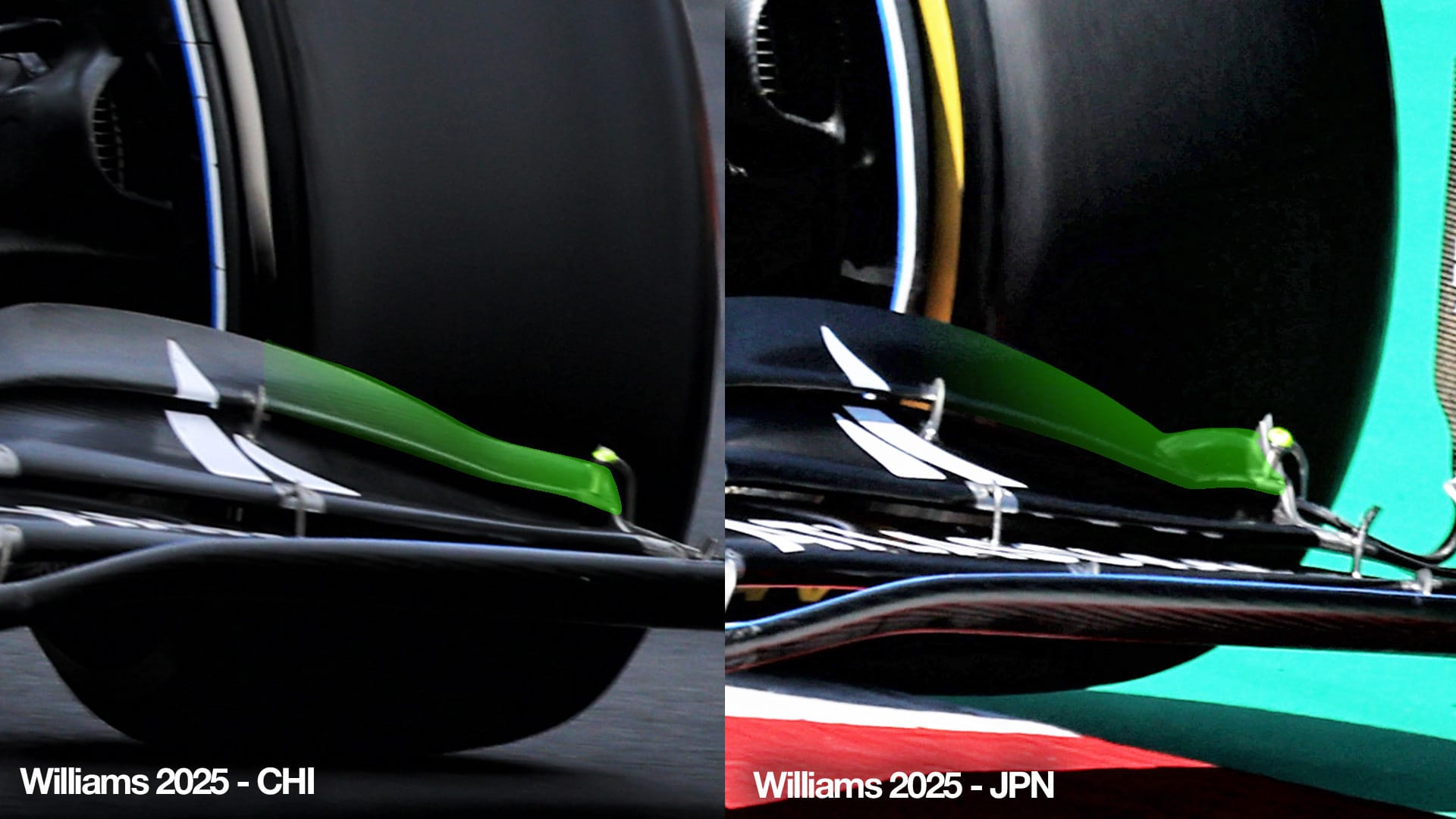
Williams is also running a revised front wing with a new endplate and a reshaped top element. The new element has been designed to produce greater load and therefore a bigger balance range between front and rear.
Explaining the changes, Williams said: "The updated flap geometry produces more local load, which allows us to efficiently rebalance more load from the rear wing.
"The interaction of the subsequent flow with the front suspension and brake duct furniture is different, which leads to improved control of the front wheel wake."
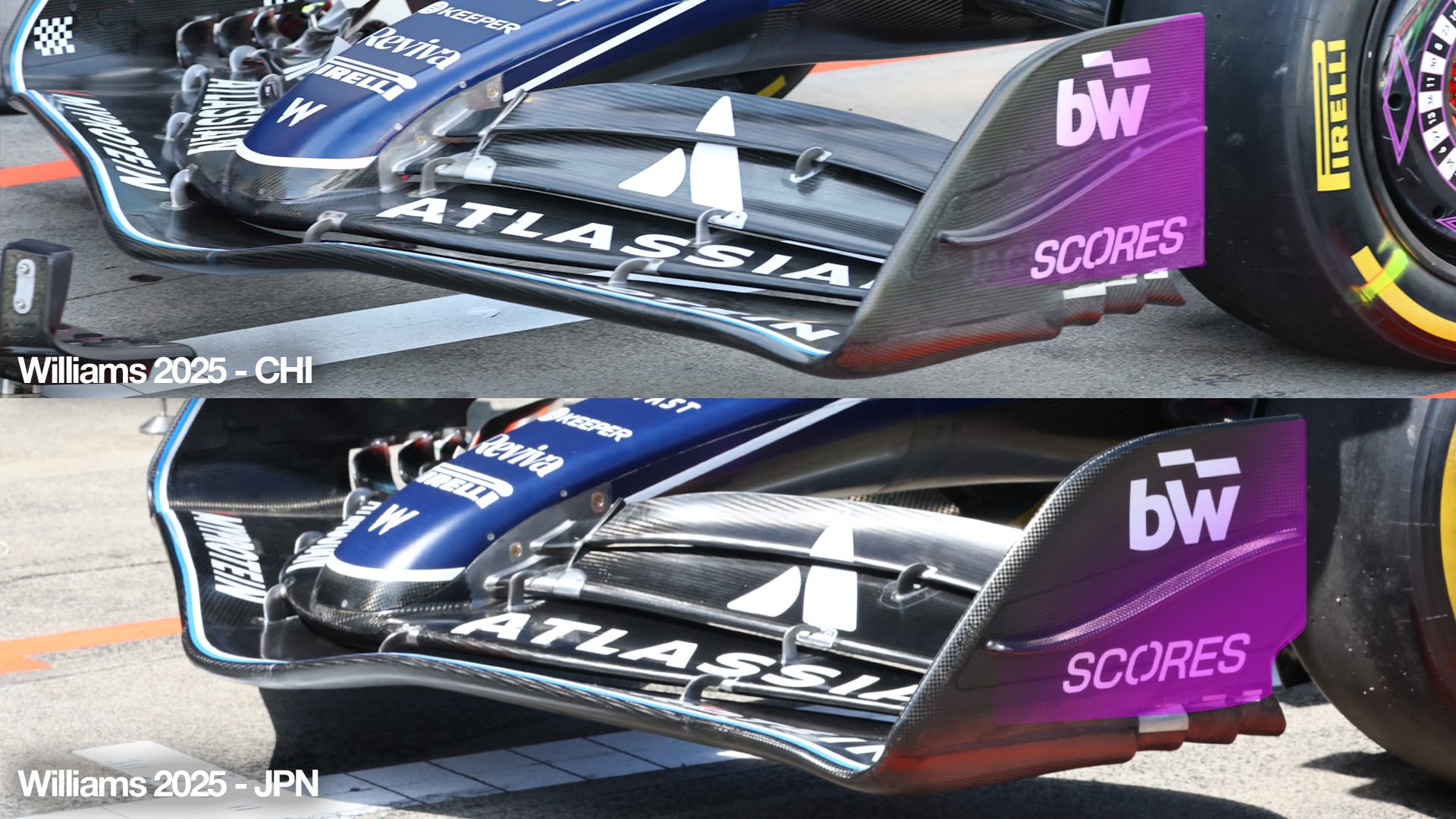
The endplate has also been re-optimised around the new element.

